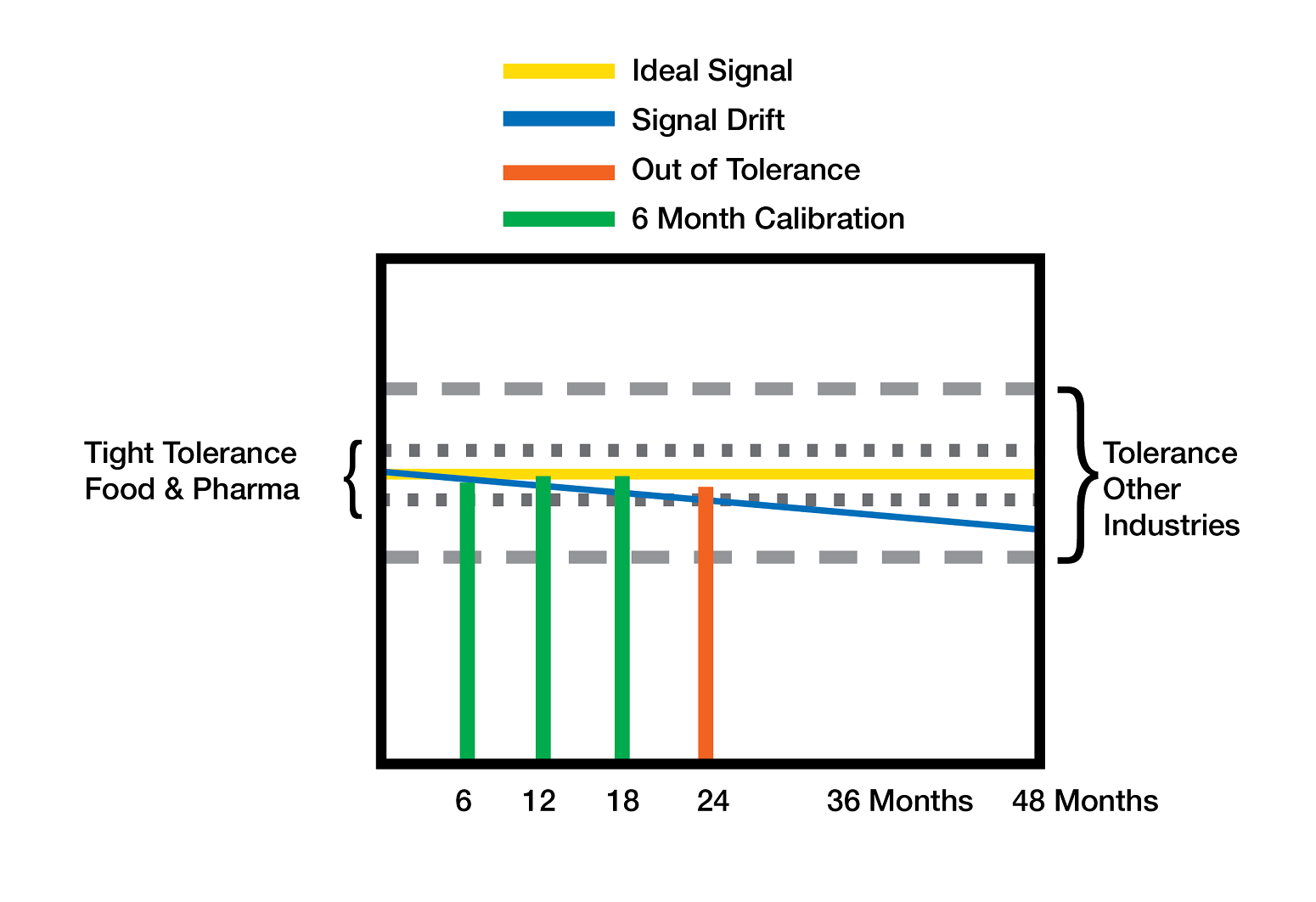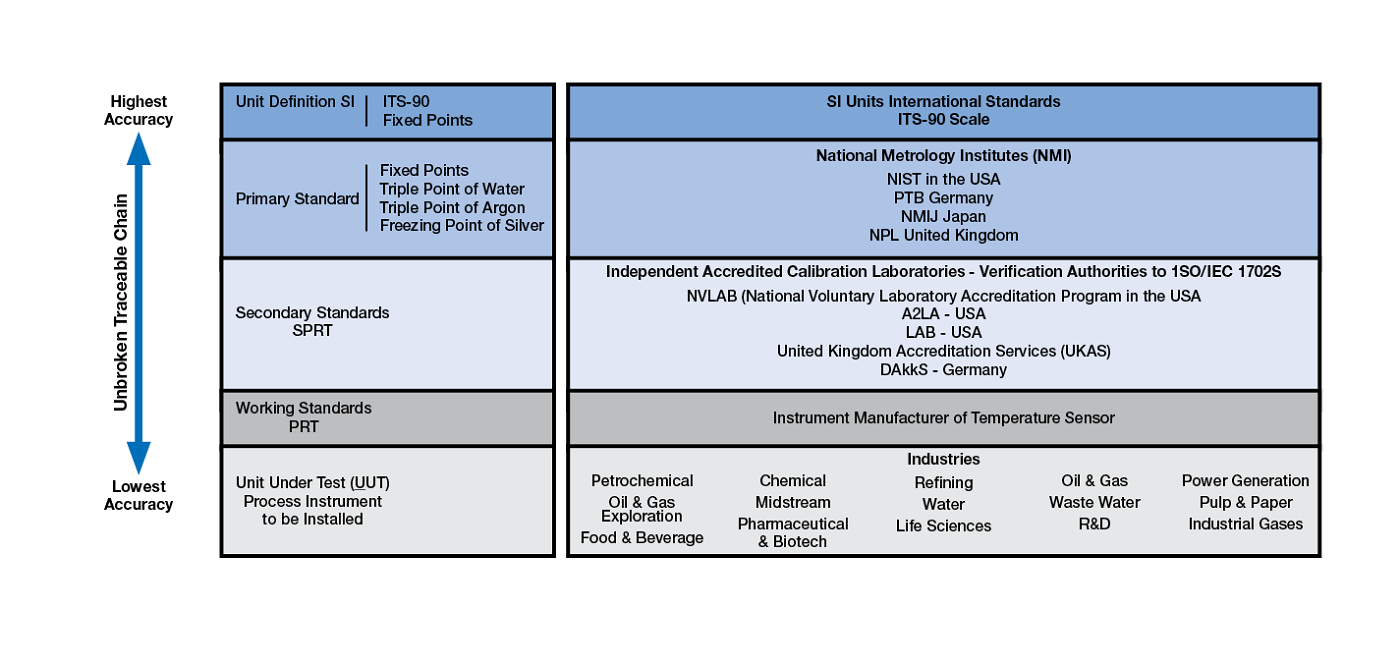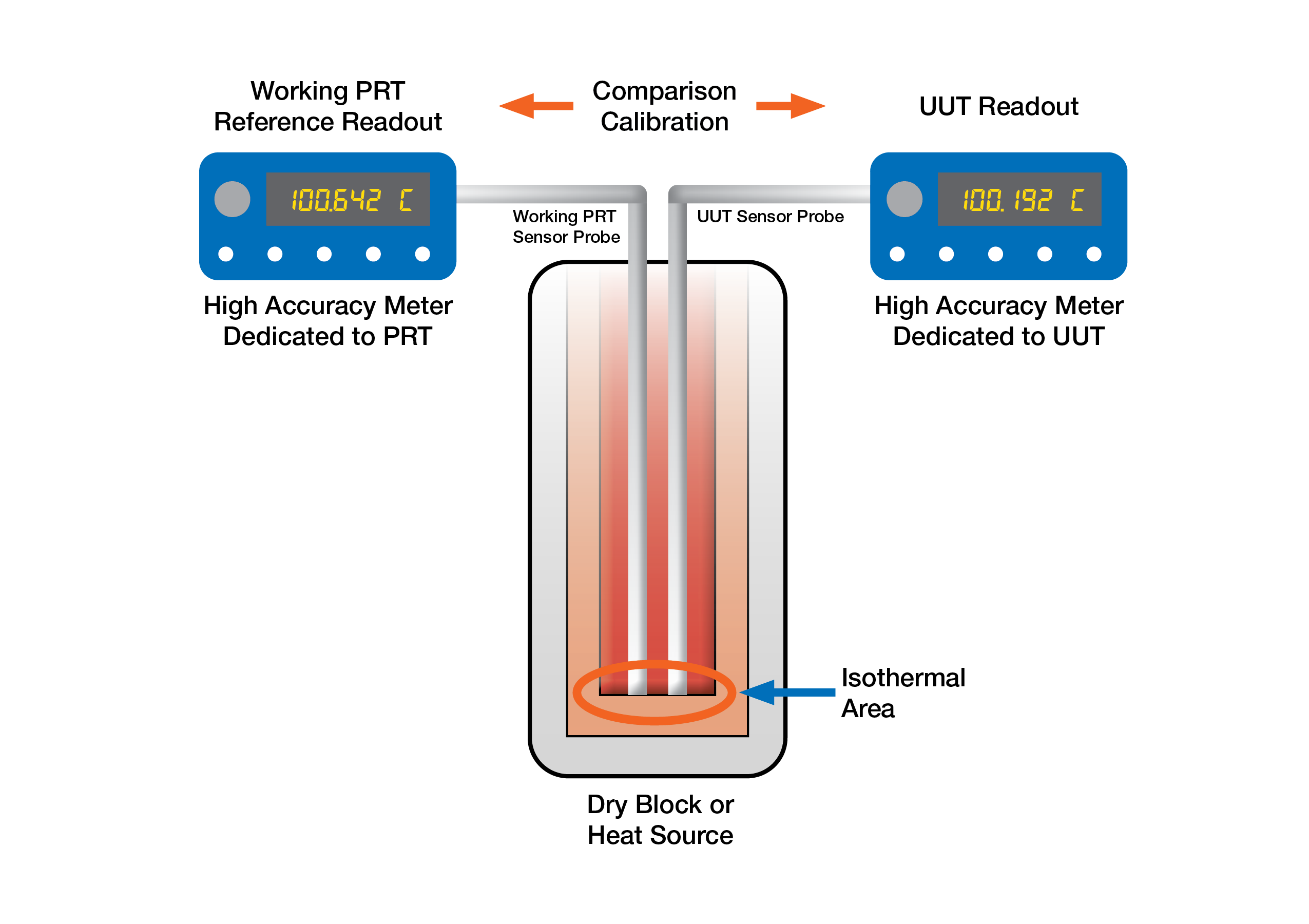Subscribe now and get the latest blog posts delivered straight to your inbox.
Why and How to Perform a Thermocouple Calibration

This article was originally published on August 23, 2023, by Rick Zerafin and was updated on June 26, 2024, by Dave Dlugos.
Consistently accurate temperature measurements are vital to several industrial processes in numerous industries from construction to energy to manufacturing. Although many instruments can measure the temperature of gas and liquid in these processes, thermocouples are among the most popular thanks to their simple design and versatility.
Over time, however, the thermocouple’s performance may tail off for any number of reasons. Two of the most common are drift and elevated temperature.
As a leading authority in temperature measurement instrumentation, we help customers understand the factors to consider when selecting instruments and the steps needed to keep systems running efficiently. If your process includes temperature measurement with a thermocouple, this article will explain why it is important to calibrate your instrument and how to do it.
You will also get access to helpful resources that can help you gain deeper knowledge on the subject of temperature sensors.
Drift causes thermocouple temperature measurements to shift over time.
All instruments including thermocouples experience a phenomenon of “drift” from their original output signal. Sensors will drift for many reasons including mechanical shock, cold working, vibration, thermal cycling, aging, corrosion and oxidizing environments. Due to the number of process variables, drift is random and difficult to predict.
The significance of drift will depend on the application. Drift that is considered minimal in a petrochemical process application, may be detrimental in a batch pharmaceutical process. Tight tolerance applications like Clean in Place (CIP) programs may require a stringent calibration schedule with a high frequency to help prevent sensors from going out of tolerance undetected. See Figure 1.
Figure 1: Thermocouple Drift and its Effect on Different Industries

In process applications with low to medium temperatures, thermocouples will drift, but stay within specified tolerance acceptance levels for longer periods as compared to drift at elevated temperatures. In moderate environments, thermocouples configured correctly can provide useful services ranging from five to ten years and longer.
Elevated temperatures also cause thermocouple drift.
At elevated temperatures in the range of 900 °C and higher, thermocouple drift is accelerated when there is enough energy to drive impurities onto the thermocouple alloy conductors and change their composition.
In some applications, chromium from one conductor diffuses onto the second conductor and reduces the millivolt output downward. The resulting lower temperature reading may be misconstrued by an operator as a need to increase energy to a furnace or incinerator, resulting in further sensor degradation as well as significant energy losses.
Unlike the calibration of a transmitter, thermocouple calibration does not reset the sensor output signal to its original pristine condition as the conductors have been compromised to a certain extent.
How thermocouple calibrations are performed.
Now that you know why you should calibrate a thermocouple, the next step is to understand how a thermocouple calibration is performed.
The most common type of calibration is a comparison between the sensor to be installed into a process at the plant and a reference sensor with a known error.
The sensor installed at the plant has an unknown uncertainty prior to the calibration. This thermocouple is called the Unit Under Test or UUT. There are several other common names used, including Sensor Under Test (SUT), Device Under Test (DUT), and Unit Under Calibration (UUC).
A high-accuracy certified sensor is used to calibrate and is called a Platinum Resistance Thermometer (PRT). This PRT is referred to as a “Working PRT” as it is used continuously to calibrate multiple process sensors throughout its life.
Figure 2: Calibration Traceability Chain from Processing Plant to National International Standards.

The Working PRT sensor is certified and traceable via an unbroken traceable link through National Accredited Labs, National Metrology Institutes, and up to an International Standard. Other more accurate sensors called Secondary (SPRT) and Primary PRTs are used to certify working PRTs prior to their delivery to a calibration lab.
The thermocouple calibration process.
In the calibration process, the temperature measurement reading of the Certified Working PRT is compared by calibration engineers and calibration technicians to the measurement reading of the UUT for a given temperature point.
How the calibration is performed
- The UUT and PRT are installed into a heat source (commonly a dry block).
- The dry block is set to a given temperature and allowed to stabilize.
- The two separate output signals of each sensor are captured and recorded by high-accuracy calibrated meters (as shown in the figure below).
- The temperature measurements of the PRT and UUT are compared to each other.
- The error of the Unit Under Test is determined by an analysis of the temperature measurement differential from the Working PRT and the Known Error of the PRT.
If the comparison is acceptable per the customer’s specification, a certificate is produced with the pertinent information of both sensors and the measurement meters. The UUT sensor is typically labeled and tagged to match the corresponding Calibration Certificate serial or tag number.
Both Sensor and Certificate are delivered to the plant, providing process operations, maintenance, reliability, and HSE personnel with the added confidence of a thermocouple with a known error traceable to National and International Standards.
Figure 3: Sensor Comparison Calibration Setup with Dry Block as Heat Source
Ready to learn more about thermocouples?
Now that you know what thermocouple calibration is and its benefits, you can research the solution that’s best suited for your application. Keeping these factors in mind can help ensure that you avoid problems and keep your process running with reliable and accurate temperature measurements.
You deserve to feel confident in your measurement equipment. At Ashcroft, we understand that not all applications are the same and requirements can vary. We provide support for your everyday operational needs, MRO and turnarounds, working with engineering procurement construction (EPC), and corporate engineering firms on large capital projects with a dedicated support team.
If you want to learn more about thermocouples and other temperature sensors, check out some of our other blog posts:
- What is Thermocouple Calibration? (and what are its Benefits?)
- Product Review: New RTDs and Thermocouples
- Fitting a Thermowell to Bimetal Thermometers or RTDs/Thermocouples
- How Much Do Temperature Sensors Cost?
Feel free to contact us today to talk to one of our industry experts and get your questions answered.
And if you’d like to learn more about thermocouples and temperature sensors, download our brochure:
Dave Dlugos, Product Technical Leader
Dave Dlugos has a BSEE degree and 40 years of experience in the measurement industry performing design engineering and product management. He has earned 4 U.S. patents and joined Ashcroft in 2007, currently as the Product Technical Leader. He is a senior member of the International Society of Automation (ISA), past ISA District 1, Vice President, past ISA water and wastewater division board member and the past President of CT Valley ISA Section.




























